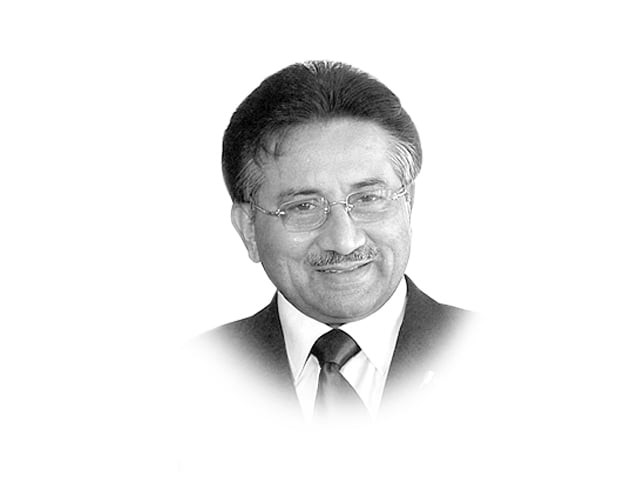What should be done in Afghanistan
The effect that we want to achieve is to have in place a legitimate Pashtun-dominated government in Kabul.

The fruits of this victory all went to the West, with the Cold War ending in the West’s victory, dismemberment of the Soviet Union, liberation of East Europe and the reunification of Germany. Unfortunately, what Afghanistan and Pakistan got after 1989 were a series of three short-sighted blunders leading to complications and perhaps, avoidable turmoil in the region. The rehabilitation and resettlement of the mujahideen brought into Afghanistan was totally ignored.
The first blunder was the abandonment of Afghanistan and Pakistan by the US in 1989. The chaos that followed for the entire decade of the 90s gave birth to al Qaeda and later the Taliban.
The second was the non-recognition of the Taliban government which ruled 90 per cent of Afghanistan after 1997. My idea of the entire world recognising the Taliban government and opening diplomatic missions in Kabul which would be managed from within, was not paid any heed to. Had it been done, maybe we could have saved the Bamiyan Buddha statues and even untangled the Osama bin Laden dispute.
The third blunder was committed after 9/11 when the Taliban, who were all Pashtuns, were defeated with the help of the Northern Alliance composed of three minority ethnic groups (Uzbeks, Hazaras and Tajiks). The Taliban and al Qaeda were dispersed and they ran into the mountains and the cities of Pakistan. Their organisational and command structure was totally dismantled. The military achieved its objective of getting into a dominant position. The logical course of action after this was to change strategy and place a legitimate government in Afghanistan, This implies a government dominated by the Pashtun majority (half of the Afghan population), because historically nobody other than Pashtuns have governed Afghanistan. Not doing this and persisting with a government dominated by a Tajik minority, still in place, was and still is a great blunder.
The Taliban resurgence started in late 2003, mainly, because of the third blunder of not weaning away the Pashtun from the Taliban. My view has always been that all Taliban are Pashtun, but all Pashtun are not Taliban; therefore, we can wean them away from the Taliban. Now, after eight years we are talking of parleys with moderate Taliban, or even Taliban, but from a position of weakness, when we have declared our intention to quit.
The present situation: The terrorist situation has transformed or visibly developed in the region and in the world, in the last few years. Let us see its contours in various countries.
Pakistan faces four menaces from terrorism. Each one requires an in-depth understanding and a different strategy to tackle: The first is al Qaeda which has a presence in the mountains of Fata, though in small numbers, and needs to be evicted. The second is the Taliban presence in Fata, especially in South and North Waziristan, and in Bajaur agency. However, they are our own people and have to be handled with acumen. We need to follow a triple strategy of force accompanied by a political and a socio-economic component. Deals must be struck with the tribal Pashtuns to wean them away from the Taliban and thus isolate the latter, who can then be dealt with militarily. Then there is the Talibanisation in the settled districts of Khyber-Pakhtunkhwa and even beyond. This has to be contained with force. The last is extremism and extremist organisations in some pockets of Pakistani society, which are primarily a fallout of Taliban activity in Afghanistan and mujahideen activity in Indian-held Kashmir.
Moderation has to be brought into society through a five-pronged strategy of stopping misuse of mosques for preaching militancy; banning militant organisations and not allowing them to resurface with different titles; ensuring that the curriculum/ syllabus in schools has no content of religious or sectarian extremism and mainstreaming students in madrassas
There is also the issue of mujahideen activity in Indian-held Kashmir against the Indian Army. This is supported by mujahideen groups in Pakistan and has tremendous public sympathy. Furthermore, extremism is on the rise in Muslim youth in India because of alienation of Muslims due to a sense of deprivation and suppression. The situation becomes more alarming due to the nexus emerging between extremists in India and the mujahideen in Kashmir on one hand, and extremists and the Taliban and al Qaeda in Pakistan and Afghanistan on the other.
The menace deepens with the emergence of al Qaeda in the Islamic Maghrib centered around Algeria and Mali and, in the Arabian peninsula, centred around Yemen and Somalia. The centre of gravity of all this extremism and terrorism, however, lies in Afghanistan and the tribal areas of Pakistan.
The future course: Losing at the centre of gravity means losing everywhere. Quitting from Afghanistan without getting into a dominant military position and placing a legitimate Pashtun-dominated government in Afghanistan could spell disaster for the region and also endanger the world.
So what is the winning strategy? In Afghanistan we are still diluted in space but since we cannot send additional Nato/Isaf forces we must increase the strength of the Afghan National Army. However, the correct ethnic balance must also be ensured. Then, we need to identify Pashtun tribes and tribal Maliks who have no ideological affinity with the Taliban and arm them to create lashkars to fight the Taliban and al Qaeda. With such a strategy in place, the drawdown of troops from the area should be effect-related rather than time-related. The effect that we would want to achieve is to be in a dominant force position and have in place a legitimate Pashtun-dominated government in Kabul.
Published in The Express Tribune, December 15th, 2010.














COMMENTS
Comments are moderated and generally will be posted if they are on-topic and not abusive.
For more information, please see our Comments FAQ